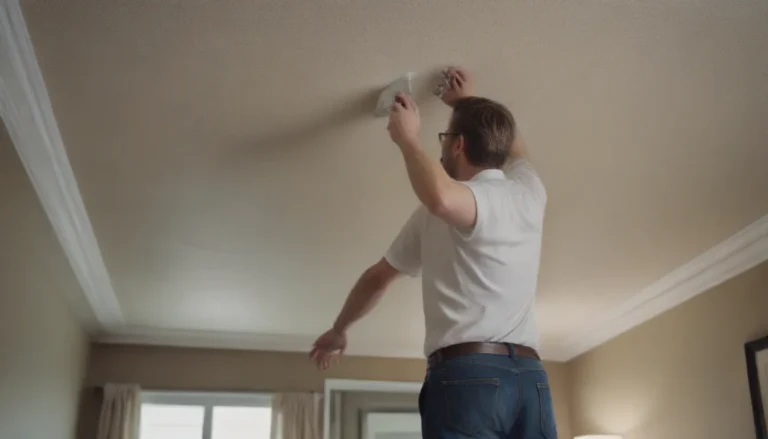The Ultimate Guide to Lally Columns: Everything You Need to Know

Welcome to our comprehensive guide on all things lally columns! If you’re a homeowner facing structural issues like sagging floors, you may be worried about costly repair bills. However, lally columns can be a practical solution for minor foundation problems in crawl spaces or basements. In this article, we’ll delve deep into what lally columns are, when to use permanent vs. temporary lally columns, adjustable vs. non-adjustable lally columns, installation tips, safety considerations, and maintenance advice. Let’s get started!
Understanding Lally Columns
So, what exactly is a lally column? A lally column is a steel column used to support an unsupported joist or beam either temporarily or permanently. While the traditional lally column consisted of a non-adjustable steel column filled with concrete, modern versions include telescoping steel tubes that can adjust upward or downward and lock in place.
Fun Fact: The lally column, often mistakenly called a “lolly column,” was invented in the late 1800s by John Lally in Waltham, Massachusetts. It was designed to provide fireproof and insect-proof structural support for buildings.
Typical Lally Column Projects
Here are some common scenarios where you might need a lally column:
- Fixing sagging floors
- Supporting heavy structural weight during repairs
- Shoring up a structure in a basement or crawl space
Permanent vs. Temporary Lally Columns
Depending on your project’s scope and your structure’s needs, you may choose between temporary or permanent lally columns. Here’s a breakdown of when to use each:
When to Use Temporary Lally Columns
Temporary lally columns are ideal for propping up heavy structural weight during specific repairs, like wall renovations or door installations. These columns are often used to support joists when removing load-bearing walls, and they can be removed once the necessary structural modifications are made.
When to Use Permanent Lally Columns
Permanent lally columns, whether adjustable or non-adjustable, can remain in place long-term, in compliance with local building codes. They are typically installed to address structural issues and provide ongoing support to a building.
Adjustable vs. Non-Adjustable Lally Columns
Lally columns come in adjustable and non-adjustable variations, each with its own advantages:
Adjustable Lally Columns
Adjustable lally columns are easy to install as they can slide into place and adjust to fit the required space. These columns are available in different heights, with shorter columns supporting greater weights than longer ones. Adjusting the column’s length can affect its weight capacity.
Non-Adjustable Lally Columns
Non-adjustable steel columns require more preparation as they need to be cut to fit specific spaces. Typically made of 11-gauge steel and 4 inches in diameter, these columns can be left exposed or boxed in with wood and drywall in finished basements.
Tip: You can paint exposed lally columns to match your decor. Many columns come primed and ready for painting.
Installing a Lally Column
While installing a lally column may seem straightforward, following essential steps is crucial to ensure its strength and stability. Here’s a step-by-step guide for setting up an adjustable steel lally column:
- Measure the Space: Determine the vertical distance the column needs to span.
- Establish Plate Placement: Position the metal plates on the underside of the load-bearing beam.
- Attach Plates: Secure the metal plates to the top and bottom of the lally column.
- Adjust the Column: Turn the machine screw until the column, along with metal plates, is slightly shorter than the distance between the column and the floor.
- Position the Column: Slide the column into place and fasten the plate using bolts.
- Check for Plumb: Ensure the column is plumb using a level and make adjustments if needed.
- Secure the Base: Fasten the bottom plate to the floor, ensuring a sturdy connection.
Tip: Consult the manufacturer’s instructions for proper placement direction of adjustable lally columns.
Safety Tips for Working with Lally Columns
Installing and working around lally columns can pose safety risks if not done correctly. Here are some safety considerations to keep in mind:
- Ensure the column is correctly sized and capable of supporting the load.
- Use proper tools and equipment to prevent accidents.
- Follow manufacturer instructions for installation and adjustment.
Maintaining Lally Columns
Most permanent lally columns require minimal maintenance after installation. However, if your home continues to experience settling or sagging, you may need to extend the column slightly. When making adjustments, do so carefully to avoid damaging the home or compromising safety. If significant settling occurs, consult a structural engineer for guidance.
By following these tips and guidelines, you can effectively install, maintain, and work with lally columns to address structural issues in your home. If you’re unsure about any aspect of lally column installation or maintenance, always seek professional advice to ensure the safety and integrity of your property. Happy renovating!





